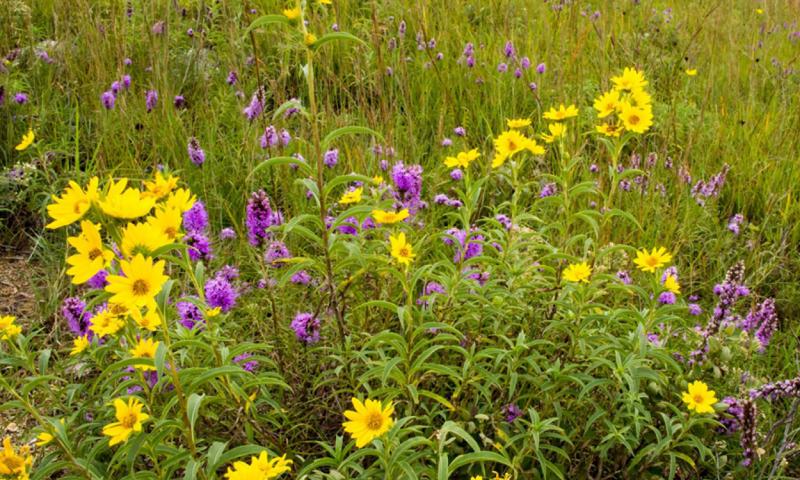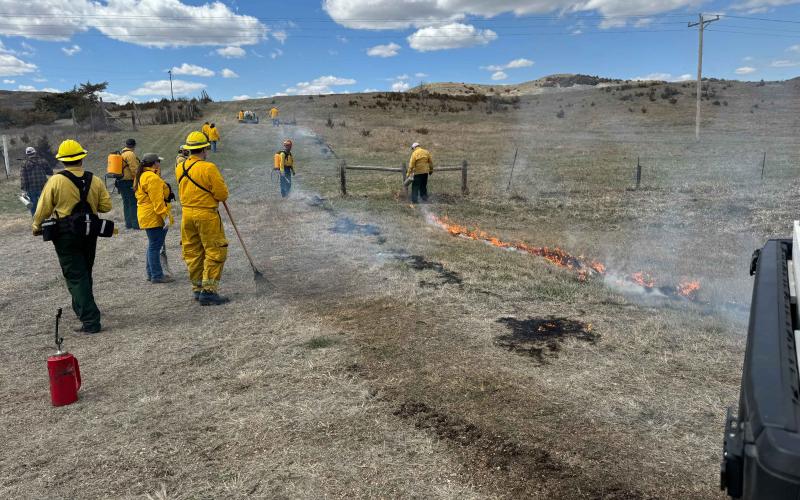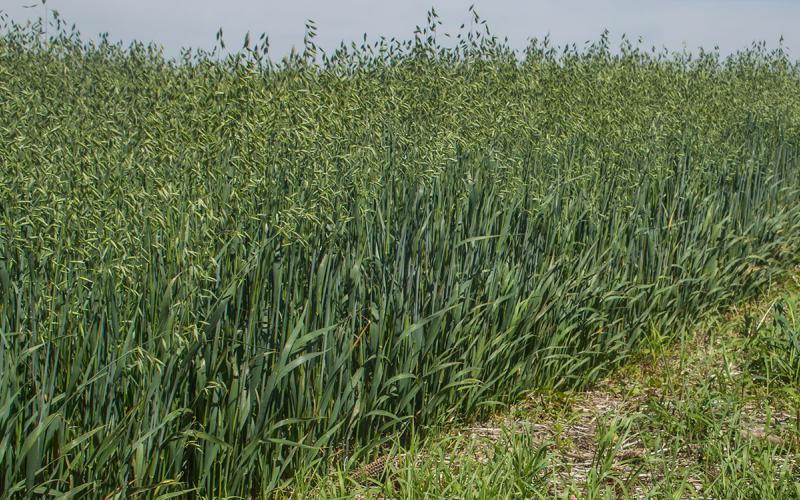Written collaboratively by Krista Ehlert and Lora Perkins.
Background
South Dakota is part of the landscape of the Northern Great Plains (NGP), which was historically dense with native grasses and forbs (wildflowers). Invasion and establishment by invasive plants and weeds started with early European settlers. We once were able to manage and remove invasive plants that were part of a native landscape; however, now it is the opposite - we are managing and restoring native plants among a backdrop of invasive species. This is evident across the NGP, where we have been and are seeing the invasion and establishment of species such as Kentucky bluegrass, smooth brome, and crested wheatgrass. Many parts of the NGP are also degraded due to natural and human-caused impacts, with just one example being saline/sodic soils (soils that contain enough soluble salt to impact plant growth). As a result, we need to better understand native plant restoration and production to help foster native plants within the NGP.
Overview of The Native Plant Initiative

The SDSU Native Plant Initiative (NPI) was developed and is spearheaded by Dr. Lora Perkins, Associate Professor in the Department of Natural Resource Management and Affiliate Associate Professor in the Department of Agronomy, Horticulture and Plant Science. Several other SDSU personnel are involved and are listed on the Native Plant Initiative website. The mission of the NPI is to conduct research, education, and outreach to support excellence in native plant restoration and production in the NGP. Specifically, the NPI will produce science that provides us with a better understanding of native plant restoration and production, and information will be shared with producers, land managers, local communities, as well as the general science community. Students at every level - from K-12 to graduate students - are involved in the NPI’s research and outreach activities.
Overall Research Objectives
One theme of the NPI’s research is native plant species and genetic considerations. Characteristics that are being investigated to inform suitability are ease of propagation, cultural importance, rare species, benefits to pollinators, and charisma (showy species or state flowers). Further, the NPI is also investigating the role that genotypes play in restoration and production, because the assumption is often that “local is best;” however, research does not always support this, and it may or may not hold true for different species. Lastly, to have successful propagation, native seeds need to germinate. Gemination is the first - and sometimes the largest - hurdle a seed must get through, so efforts are underway to investigate seed dormancy and germination requirements.
A second theme of the NPI’s research is native plant restoration - how do we go about successfully restoring degraded areas? Several aspects will be looked at to answer this question, including what site pre-treatment is needed, the role of seed and soil treatments in enhancing establishment, survival, and performance, best practices for transplanting native species into the field, and which management methods maintain or increase native species after restoration. Lastly, to increase producer and stakeholder buy-in, a quantitative assessment will be conducted of the ecological and environmental benefits that native plant restoration provides.
Another objective of the NPI’s research is native plant production, including seeds and seedlings. Planting methods will be determined for each native species and will focus on evaluating variables such as row spacing, seeding rate, and seeding depth. Stand management will also be investigated, as well as how different stand management strategies impact seed performance. Other factors like optimal harvest methods, stand life, and which characteristics in production better predict performance in a restoration setting are also being studied.
Current NPI Efforts
The NPI has been off to a steady start, beginning with greenhouse propagation of over 20 different wildflowers and grasses that are prairie species native to South Dakota. Among the species that were propagated were: field pussytoes, swamp milkweed, prairie smoke, Rocky Mountain gayfeather, large beardtongue, obedient plant, Indian breadroot, and pasqueflower, to name a few! The hard work of the NPI resulted in over 3,000 of these species that were offered at a Native Plant Sale held in Brookings this past spring. Hundreds of people came to the sale, and the seedlings are now established as part of natural, native landscaping efforts in eastern SD.
In addition to greenhouse propagation, research is being conducted with native plants in demonstration and field plots both on and off the SDSU campus. We have plots to begin to develop field propagation protocols and to measure seed production and benefits to floral visitors and pollinators. Last year, we established plots of anise hyssop, prairie smoke, western wallflower, white panicle aster, a couple species of dalea, and echinacea. In the fall, an entomologist came and sampled the floral visitors and pollinators - these samples are currently being analyzed.
We are about to start a 5-year project funded by the USDA that examines how monoculture plots of native species impact soil health. This project stems from the observation that many landowners plant pollinator plots with perennial natives. Although these plots provide many benefits to habitat and soil health because they are mixed species plots, they are not conducive to harvesting seed. Thus, we are examining if we can ‘unmix’ these types of plots just enough to enable harvesting without losing the benefits for pollinators and soil health.
The NPI also operates under the idea that “nature is full,” i.e., there is a native plant that can grow in any site, no matter how challenging. We are working on identifying native plants that can grow in saline-sodic soils so there are native options for restoring/remediating those sites. This is critical, as an estimated 3.4 million hectares of land in SD have salt-impacted soils. Growing native plants in salt-impacted areas will provide cover, decrease erosion, and start to re-establish soil health. More information on this important work will be provided in additional Extension articles.
Summary
The work that SDSU’s NPI is conducting will improve the information we have about South Dakota’s native plants, including which ones are best suited to restoration and production. This information will help guide stakeholders such as land managers, producers, and gardeners in matching native species to desired restoration outcomes.
About the Native Plant Initiative
Native plants are the foundation that supports insects, pollinators (including bees), birds and wildlife.
Learn More

